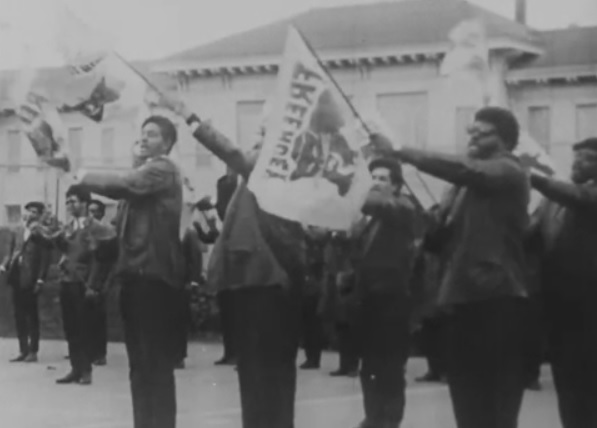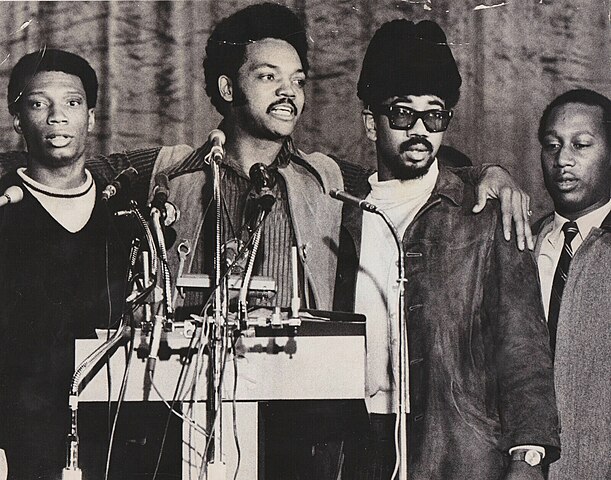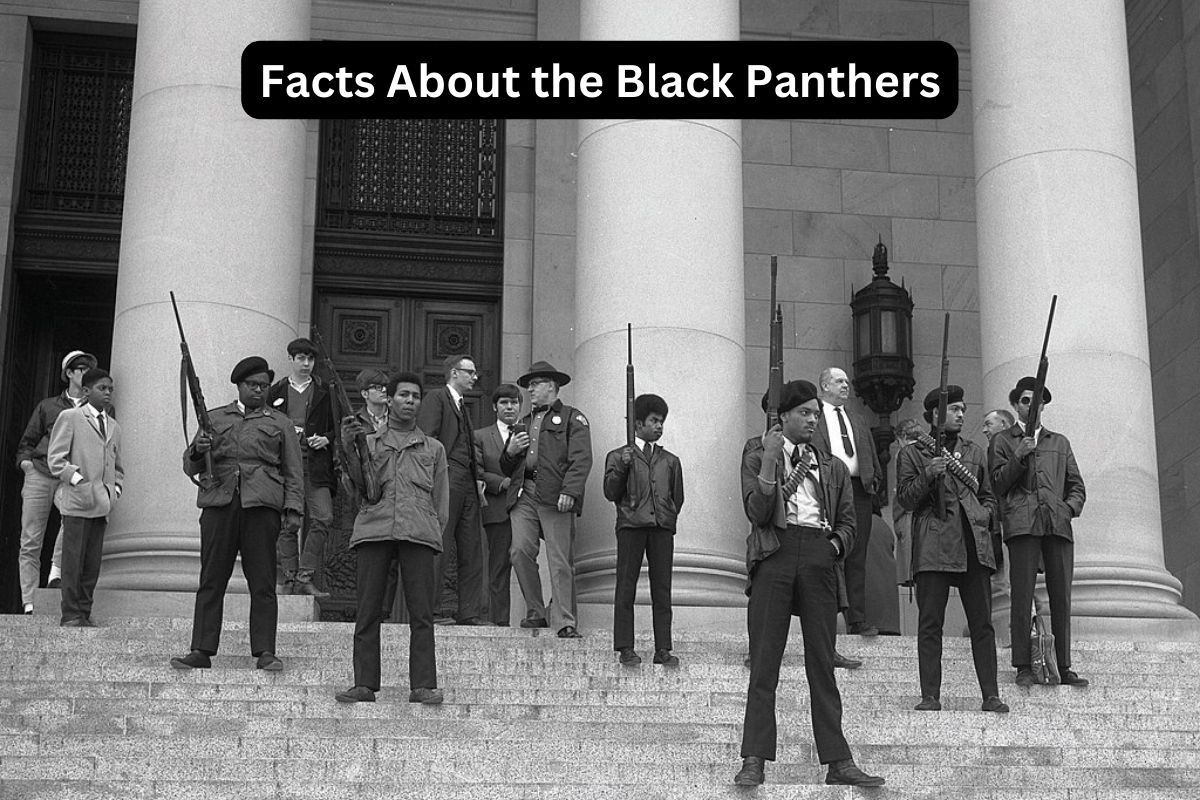The Black Panther Party for Self-Defense, known as the Black Panthers, was a revolutionary socialist organization founded in 1966 in Oakland, California.
Led by Huey P. Newton and Bobby Seale, the Black Panthers aimed to combat police brutality and systemic oppression faced by African Americans.
They advocated for armed self-defense, established community programs, and published The Black Panther newspaper.
Despite facing government repression and internal conflicts, the Black Panthers made significant contributions to the Civil Rights Movement and inspired movements for social justice both domestically and internationally.
While officially dissolved in 1982, their legacy continues to shape conversations about racial inequality and the struggle for justice.
Black Panthers Facts
1. Formed in Oakland, California, in 1966
The Black Panthers were formed in Oakland, California, in 1966. The city provided a fertile ground for the party’s formation due to the prevalent issues of police brutality and racial inequality faced by African Americans in the area.
Also Read: Famous Black Panthers
Huey P. Newton and Bobby Seale, two college students at the time, were inspired to establish the organization to address these pressing concerns.
2. Founded by Huey P. Newton and Bobby Seale
Huey P. Newton and Bobby Seale co-founded the Black Panther Party. They were motivated by their personal experiences of racial discrimination and witnessing the mistreatment of African American communities by law enforcement.
Newton and Seale aimed to create a united front against racism and oppression, advocating for the rights and empowerment of Black individuals.

3. Focused on combating police brutality and systemic oppression
One of the central focuses of the Black Panthers was combating police brutality and systemic oppression. The party strongly believed in the necessity of self-defense as a means of protecting their communities from violence.
Also Read: Female Black Panthers
They viewed the police as an occupying force in Black neighborhoods, often engaging in unjustified acts of violence against African Americans.
By openly carrying firearms and monitoring police activities, the Black Panthers aimed to raise awareness about police misconduct and challenge oppressive systems.
4. Advocated for armed self-defense
The Black Panther Party advocated for armed self-defense as a means of protecting their communities from violence and oppression. They believed that African Americans had the right to defend themselves against police brutality and other forms of injustice.
The party emphasized the importance of being prepared to confront violence with self-defense measures, including the open carrying of firearms.
By openly displaying their weapons, the Black Panthers aimed to assert their rights, deter potential aggressors, and monitor police activities in their neighborhoods.
They believed that armed self-defense would not only provide a means of protection but also serve as a deterrent against unwarranted acts of violence and harassment.
5. Used the black panther as their emblem
The Black Panther Party embraced the black panther as their emblem, symbolizing strength, resilience, and resistance. The image of the black panther became synonymous with their struggle for justice and equality.
The emblem was prominently displayed on their uniforms, banners, and literature, serving as a powerful visual representation of their movement.
6. Established community programs like free breakfast programs and health clinics
In addition to their focus on self-defense and resistance, the Black Panthers implemented various community programs to uplift African American communities. One of their most notable initiatives was the establishment of free breakfast programs for children.
Recognizing the importance of proper nutrition for academic success, they organized breakfast programs in multiple cities, serving thousands of meals to children who would otherwise go without.
They also initiated free health clinics, providing much-needed medical care to under-served communities. These programs aimed to address the immediate needs of the community and improve the overall well-being of African Americans.

7. Published a newspaper called The Black Panther
The Black Panthers published a newspaper called The Black Panther, which played a crucial role in spreading their ideology and informing the public about their activities.
The newspaper provided a platform for the party to address issues such as police brutality, racial inequality, and political repression. It featured articles, interviews, and essays written by party members and supporters, offering insights into their perspectives and actions.
The Black Panther newspaper helped to shape public opinion and foster a sense of community among their followers, both within and beyond their local chapters.
8. Formed alliances with other social and political movements
The Black Panthers actively sought alliances with other social and political movements, both domestically and internationally. They recognized the interconnectedness of various struggles against oppression and believed in the power of solidarity.
They expressed support for anti-colonial struggles around the world, such as those in Vietnam, Cuba, and Algeria. The Black Panthers formed alliances with groups like the Young Lords, a Puerto Rican nationalist organization, and the American Indian Movement, advocating for the rights of Indigenous peoples.
These collaborations aimed to create a broader movement for social change and challenge systemic injustices on multiple fronts.
9. Targeted by FBI surveillance and infiltration
The Black Panthers were relentlessly targeted by the Federal Bureau of Investigation (FBI) under the leadership of J. Edgar Hoover. The FBI considered the Black Panthers a threat to national security and initiated the COINTELPRO (Counterintelligence Program) to undermine and destabilize the organization.
The program involved surveillance, infiltration, and the spreading of disinformation within the Black Panther Party. The FBI’s efforts to discredit and dismantle the Black Panthers through covert operations and illegal tactics significantly impacted the organization’s activities and led to internal divisions.
10. Produced influential figures like Angela Davis and Fred Hampton
Several prominent figures emerged from the Black Panther Party, playing influential roles in the fight against racial injustice.
Angela Davis, an activist and scholar, became widely known for her involvement with the party. She advocated for prison abolition, feminist causes, and the rights of marginalized communities.
Eldridge Cleaver, an influential figure within the organization, authored the book “Soul on Ice” and was actively involved in promoting the Black Panthers’ ideals.
Fred Hampton, a charismatic leader, organized alliances between various racial and ethnic groups before tragically being assassinated by law enforcement.
These individuals, among others, left a lasting impact on civil rights activism and continue to inspire generations of activists.
11. Faced internal conflicts and government repression
The Black Panthers faced internal conflicts and ideological divisions that contributed to factionalism within the organization. Disagreements over leadership, tactics, and alliances led to internal strife, weakening the party’s cohesion.
Additionally, the intense government repression, including the targeted assassination of key figures like Fred Hampton, disrupted the Black Panthers’ operations and created distrust among members.
These internal and external pressures ultimately led to the decline of the party in the early 1970s, although its legacy and impact on social and political activism persisted.
12. Made significant contributions to the Civil Rights Movement
The Black Panthers made significant contributions to the Civil Rights Movement and left a lasting impact on the fight against racial inequality.
Their community programs, such as free breakfast programs and health clinics, directly addressed the urgent needs of African American communities.
By providing essential services and empowering individuals, the Black Panthers challenged the systemic neglect and poverty that disproportionately affected Black communities.
Their initiatives inspired similar programs in other cities and demonstrated the power of grassroots organizing in combating social injustice.
13. Dissolved in 1982 but left a lasting legacy in activism and social justice
While the Black Panther Party officially dissolved in 1982, its impact on social and political activism continues to be significant. The organization’s legacy persists in ongoing conversations about racial inequality, police brutality, and the struggle for justice.
The Black Panthers’ emphasis on self-defense, community empowerment, and challenging systemic oppression remains influential in contemporary movements advocating for social change.
The party’s activism and programs laid the groundwork for future initiatives addressing the deep-rooted issues of racial discrimination and economic disparity, leaving a lasting imprint on the fight for civil rights.
